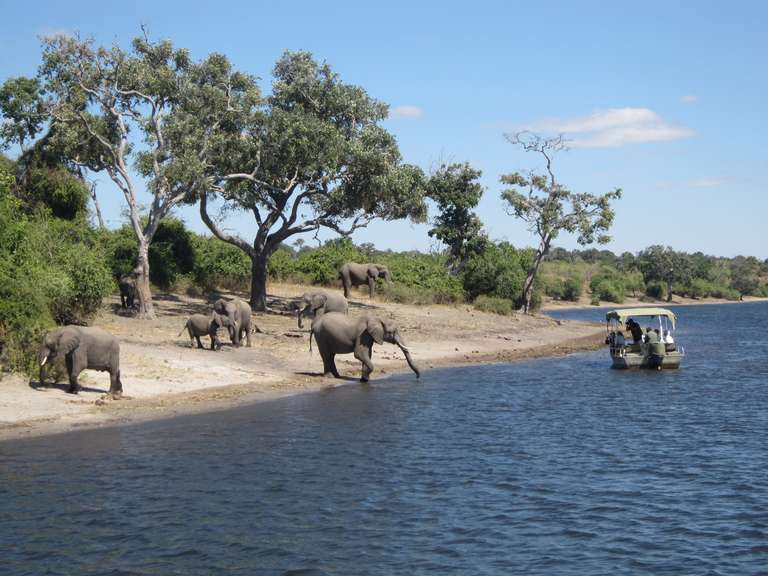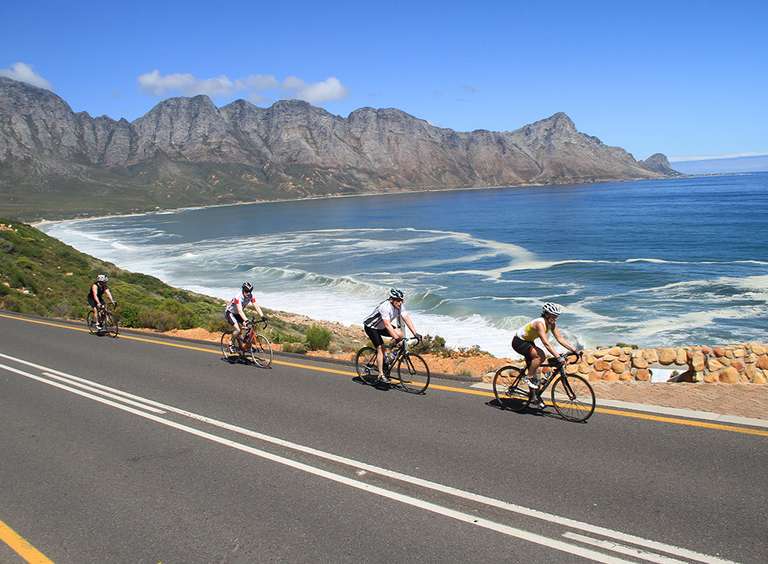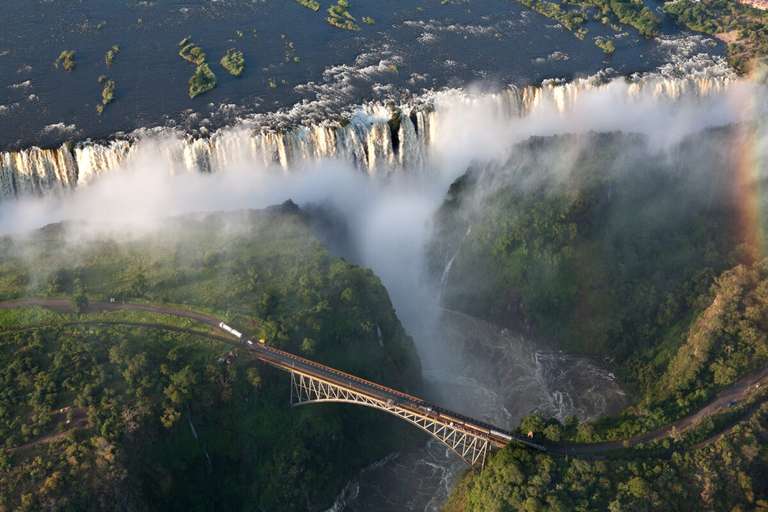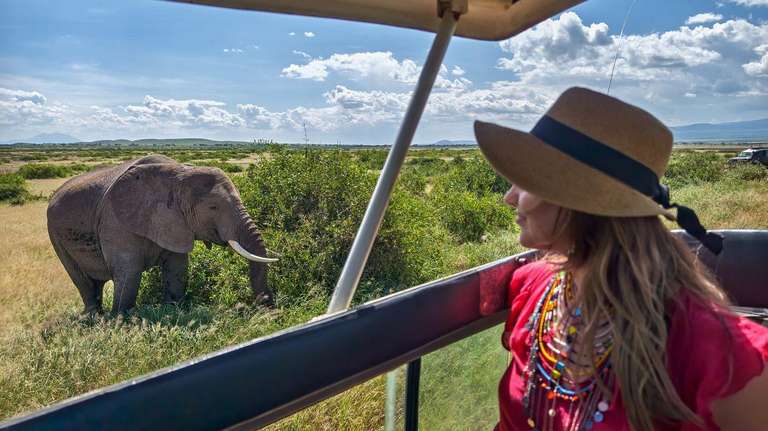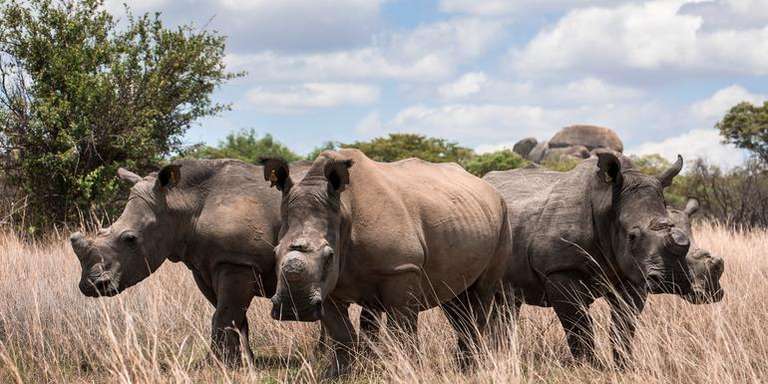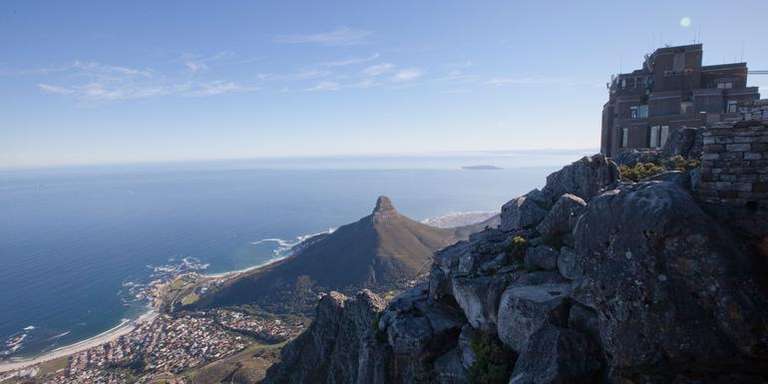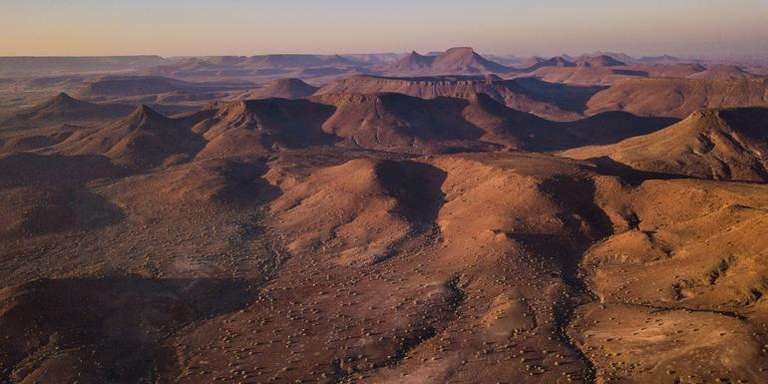13 Best Things to do in Cape Town

- Anson M
- From
- Anson M
- From
- Mark G
- From
- Peter T
- From
1. View Cape Town from the top of Table Mountain
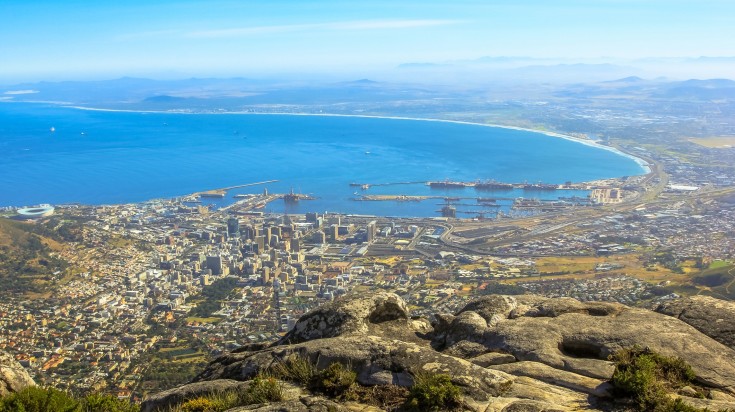
Table Mountain, indisputably Cape Town’s most iconic site, has been featured in travel blogs, on magazine covers, and in countless visitors’ photos. It is the sight that people envision when they picture South Africa and one of the best Cape Town attractions. The spot is even better in real life; a breathtaking view of Cape Town and the two oceans — the Atlantic and the Indian — awaits you at the top.
Opt for a 5-minute cable-car ride to the top of the mountain or a few hours’ long hike up the mountain side. The most popular and direct trail is Platteklip Gorge, but there are more. Check out our article on hiking Table Mountain for more information and tips! At the summit of Table Mountain you can walk around several trails that wind along the edges of Cape Town’s most magnificent cliffsides.
- Good to know: If you are hiking the Table Mountain, you have to pay a conservation fee. Depending on your entry point, fees range from USD 3.50 – 10 for adults and USD 2 – 5 for children. Cable rides can cost upto around USD 24 (for adults) for a round-trip depending on the time of the day.
2. Visit Robben Island
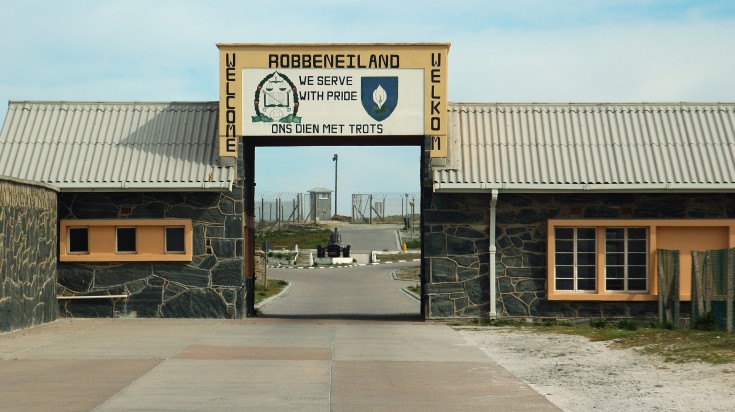
Robben Island is a UNESCO World Heritage Site, but it’s not just honored for its beauty or beaches. It’s one of the most famous prisons in the world, and one that has had many notable inmates. The Dutch were the first to use this island to isolate their prisoners in the 17th century. Following in their footsteps almost three centuries later was the South African government. They also used Robben Island as a prison during the horrific Apartheid era to imprison famous figures like Nelson Mandela. Today Robben Island is a museum, a home to several birds and animals (keep an eye out for seals and whales!) and a popular tourist attractions. A tour is a must visit for anyone coming to Cape Town for the first time.
- Good to know: A trip and tour to the island will take you about 3 – 4 hours, including ferry time. The ferry leaves at 9am, 11am, and 1pm daily.
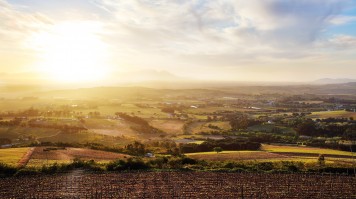
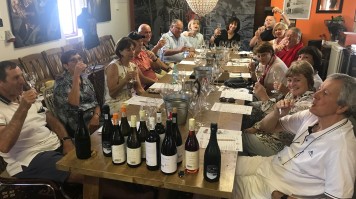
South Africa produces some excellent wine and Cape Town has definitely done its fair share in contributing to that reputation. The suburbs of the city, nestled in the lush valleys between surrounding mountains, play host to the perfect climate for grape growing and wine producing.
Stellenbosch boasts 148 wine farms and gorgeous Cape Dutch style houses. Franschhoek is a French-influenced village with an ample supply of art galleries, restaurants, cafes, and antique shops lining its quaint streets. Tastings in any winery are encouraged, and hence many feature their own wine tours. Visit some of the bigger wine estates for excellent food in an elegant atmosphere with, of course, perfectly paired wine. This is a Cape Town attraction that shouldn’t be missed.
- Good to Know: Although wine tasting in Cape Town is possible to do independently, for a more convenient and comprehensive experience, try one of these wine tasting or combination tours.
Learn more about winelands in Stellenbosch. Get more information about Franschhoek winelands too.
4. Explore the Cape Peninsula
From the rich and famous to the poverty-stricken, this large peninsula jutting into the Atlantic Ocean represents every corner of South Africa. The scenery is amazing; jagged cliffs, sprawling bays, and dazzling vistas await every visitor.
Must-see stops include: Clifton and Camps Bay, the wealthiest area of Cape Town with arguably some of the best beaches; the Atlantic Seaboard, which has some of the most impressive views in the city; the Cape Flats, the city’s poorest and most dilapidated housing project filled with squatter camps and townships; and False Bay with its charming seaside villages.
- Good to Know: Kalk Bay on the South Peninsula is a charming village that makes for a wonderful stopover for lunch, and allows plenty of art-gallery-hopping.
5. Enjoy the dramatic landscape of Cape of Good Hope

Located at the very tip of the Cape Peninsula, the Cape of Good Hope deserves its own separate category. It’s known as the most southwestern point on continental Africa, and due to its exposed location, it can be vulnerable to unpredictable weather.
The Cape, as it’s also known, has become a big tourist attraction due to its natural, rugged beauty. The rocky outcrop jutting into the ocean creates some hazardously beautiful cliffs that dive straight down into the Atlantic. Scenery aside, it’s also home to over 250 different species of animals, plenty of private little beaches and coves, and an incredible lighthouse lookout point. It’s only a little over an hour from the city center and definitely worth the drive.
- Good to Know: Cape of Good Hope opens at sunrise (6am) and closes at sunset (6pm). You do not want to miss the stunning sight of the sun rising over False Bay. Make sure to be there at sunrise!!
6. Explore Hout Bay

Hout Bay, also part of the Cape Peninsula, offers so much to see and do that it should at least be given a day to explore. Located in a valley surrounded by mountains on three sides, the southern facing bay boasts sweeping views over the Atlantic Ocean.
The sheltered bay is known for fishing charters and attractive beaches. Just off the coast lies the internationally recognized big wave spot called “dungeons.” Visit Mariner’s Wharf at the end of Hout Bay beach for the best seafood and ocean-front dining in Cape Town. Don’t forget about the local markets and nearby hikes — with so much to do the only problem you’ll have is deciding how to spend your time.
- Good to Know: A cruise to Duiker Island to see the Cape fur seals is a must. You might even see a great white shark while at it. Cruise costs around USD 6 for adults and USD 2 for children.
7. Play with Penguins at Boulders Beach

Another attraction within Cape Peninsula is Boulders Beach in False Bay. Home to a colony of African Penguins, Boulders Beach is must visit in Cape Town. These flightless birds love waddling around on the sand and appear to be quite indifferent to all the humans milling about. The African Penguin is on the verge of extinction, so do exercise care. The birds at Boulders are the result of a single pair of penguins that settled here 35 years ago!
The penguins aren’t the only draw; the actual beach is lovely too. It gets its name from the big boulders that lay scattered around on the sand, dividing parts of the beach into small, secluded coves. Great for swimming and picnicking.
- Good to know: The water in False Bay is more enjoyable for swimmers than the colder Atlantic seaboard, so pack your swimsuit if weather permits!
8. Go shopping in Greenmarket Square
As one of South Africa’s oldest public squares, Greenmarket retains its authenticity with its cobblestone plaza and local street vendors. Originally the site of a slave trade market, Greenmarket Square is now a much more cheerful and relaxed place. Wander around and browse the stalls of handmade trinkets and Afrikaans canvas paintings.
Buying is “encouraged” by the vendors, so don’t look too long at something you don’t intend to buy! Keep a supply of small bills on hand when in markets like this one; it makes everyone’s life a lot harder if you try to buy an inexpensive item with a large bill that will likely be difficult to break.
- Good to know: Greenmarket Square is open from Monday to Saturday, 9am to 4pm.
9. See the cosmopolitan side of Victoria & Alfred Waterfront
This is your one stop shop for everything South African. With over 450 shops and restaurants, this is definitely one of Cape Town’s busiest and most popular tourist destinations. The 19th century harbor was built by Queen Victoria’s son, Alfred (hence the name), and is famous for its waterfront dining, infinite amount of shops, live entertainment, and the Two Oceans Aquarium. Not to mention a killer view of Table Mountain.
- Good to know: Just 12 mins away from Cape Town City Center by car, V&A Waterfront is open from 9am to 9pm and features plenty of parking spaces around it, with varying tariffs depending on your length of stay.
10. Escape the city in Kirstenbosch Botanical Gardens
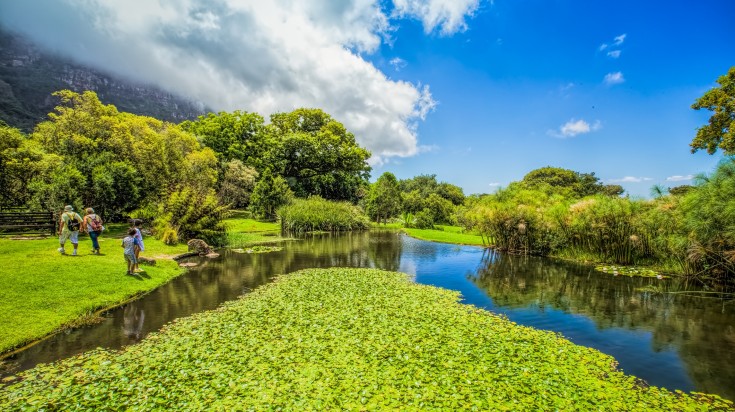
Kirstenbosch Botanical Gardens is the most well-known of South Africa’s nine National Botanical Gardens. Founded over 100 years ago, the garden today houses over 7,000 species, many of which are rare or endangered. The large, 89-acre conservatory is quite impressive with its lush green paths and chilled out paradisal feel. Highly recommended for those who want escape the city for a little slice of immaculately-manicured heaven. It also offers one of the best hiking trails in Cape Town.
Take a combination tour of Cape Town, Table Mountain and Kirstenbosch to get a taste of everything in a single day.
- Good to know: The garden remains open Monday to Sunday, from 8am – 7pm (summer) and 8am – 6pm (winter). Entrance fee is USD 6 for adults and USD 1 for children between 6 to 17 years.
11. Relive history in the District Six Museum
District Six was a residential neighborhood in Cape Town that experienced the forced removal of roughly 60,000 residents during the Apartheid Era in the 70s. They were forcefully moved to the outlying area known as the Cape Flats, where even today examples of the poorest, most poverty-stricken area can be found.
The District Six Museum, founded in 1994, is a memorial dedicated to telling the stories of the former-residents. The floor is decorated with a large map of the neighborhood and hand-written notes from the occupants. There are also old traffic signs, depictions of historical moments and demolition of the area, and personal stories.
- Good to know: The museum is open from Monday to Saturday, from 9am – 4pm. Entry fee costs around USD 3 for adults.
12. Trace Islamic footsteps in Bo-Kaap

Formerly the Malay Quarter, Bo-Kaap is the historical center for Cape Malays, an ethnic group hailing from Southeast Asia — mostly from present-day Indonesia. They brought with them their religion and culture and were the original group to introduce Islam to South Africa.Today it’s a vibrant section of the city with bright, Easter-egg colored houses and cobblestone streets. It’s also home to the Nurul Islam Mosque, constructed in 1844. The Bo-Kaap Museum is the oldest house in the area, built in the 1760s. It’s an informative establishment to visit if you’re curious to learn more about the Cape Malay influence in South Africa.
- Good to know: The Bo-Kaap Museum opens from Monday to Saturday, from 10am – 5pm. Entrance fee costs USD 2 for adults and USD 1 for children between 6 to 18 years.
13. Diving in Two Oceans Aquarium
Located on the V&A Waterfront, the Two Oceans Aquarium has more than 3,000 marine animals including turtles, sunfish, and sharks. Certified divers can take a 6-meter deep scuba diving tour and there’s even a chance to go for a dip in the shark tank! Live feedings take place every day and there are also microscope exhibits and a Touch Pool for a hands-on, educational experience.
- Good to know: The aquarium is open 365 days a year, from 9:30am – 6pm (weekdays) and 9am – 6pm (weekends). Entry costs USD 14 for adults, USD 10 for children between 14 – 17 years, and USD 7 for children of 4 – 13 years. A diving experience costs USD 73 and includes all diving gears.
With so many appealing things to do in Cape Town it may not be possible to fully experience the city in one trip — that’s why you’ll have to return again one day!
Check out our South African safaris. Choose an itinerary for your holiday by reading our travel guide on how long to spend in South Africa. You can also get in touch with our travel experts for a customized tour of South Africa.
For a seasonal overview, see our article on the best time to visit South Africa.




